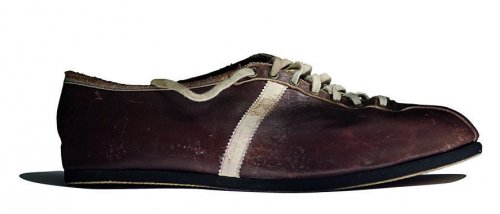 1939 marathon shoe, made by Adi Dassler, the man who began adidas AG, photo by adidas Communications
1939 marathon shoe, made by Adi Dassler, the man who began adidas AG, photo by adidas Communications
Justin sent us this piece on time, but I missed it. I thought it had some good things to say, so I edited it a bit and I hope that you enjoy it.
On the 1st of July, Canadian runners held the Canadian 10K national championships, virtually. By the end of that day, Canada names two newly crowned Canadian national champions for the 10K, and prize money will be paid for the top five runners in the male and female categories.
Some of the conditions that the race organizer has put in place to ensure a fair race include racers running on an out and back route, obviously to ensure no one takes advantage of a downhill course; a race companion to take a video of the runner on the route and a GPX file to be uploaded to get the official results.
However, questions still arise as to whether it can really be possible to get fair results from virtual races and the rightfully deserving winners be awarded for their efforts.
Below are some of the main challengers to be put into consideration in ensuring a level playing ground for runners:
1. Altitude is definitely the main factor. Elite runners can save up to two minutes in a 10km distance when they move from a high altitude to run at a lower altitude. Perhaps there needs to be a formula that can adequately address this so that times run at certain altitudes can automatically be equated to times run at lower altitudes.
2. There should be standard GPS watches to be used. From the experiences of different runners, different GPS enabled watches often record different distances on the same route. Most reviews on GPS watches rate many models of these watches below 5 in a scale of 1 to 10.
3. While some solutions may be considered to address the challenges above, the hardest one to deal with is the weather. It is impossible to have the exact same weather conditions at different places even on different days. Some runners may be lucky to run in an ideal weather during their race while others may be affected by headwinds, rainfall, hot and humid weather, among others.
All in all, the race organizers will eventually be the ones with the final say on the conditions they will put up and that they think will get them the rightful winners in their particular races. Virtual racing cannot fully replace real racing, but it is the only option we have at the moment and if the world will continue to be on lockdown, races will happen in one way or the other.
Author

Since 2013, Justin Lagat has written for RunBlogRun. His weekly column is called A view from Kenya. Justin writes about the world of Kenyan athletics on a weekly basis and during championships, provides us additional insights into the sport.
View all posts




















